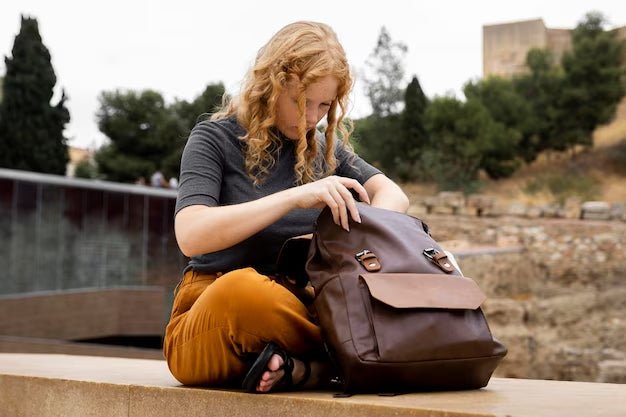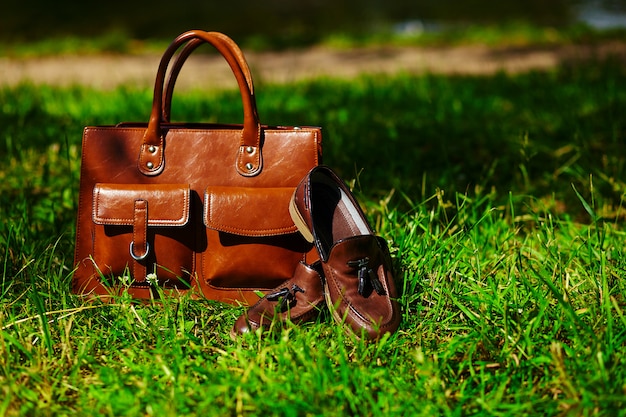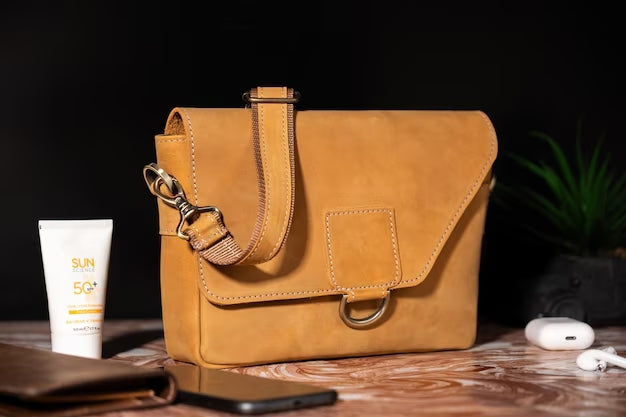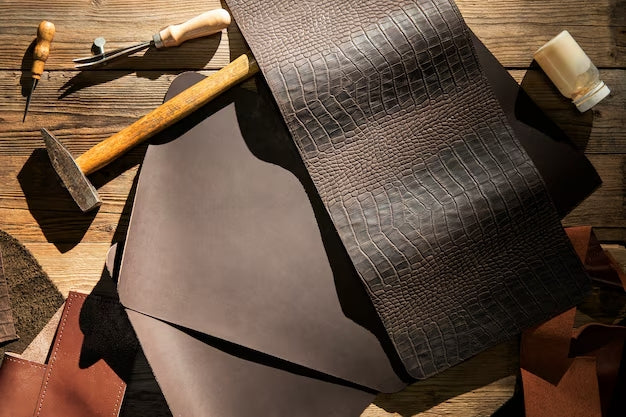
How To Clean Vegan Leather?
Vegan leather is popularly known by its synonym, faux leather. It speaks for those who disapprove of animal cruelty. Since vegan leather is not genuine, it only forms a patina with time. Instead, the surface starts to dry and crack after a few months.
Synthetic leather is also sensitive to staining and requires regular cleaning and conditioning. So you need to clean and condition the faux leather in a specific manner because its durability depends on it.
Faux leather items are often cheaper than their natural counterparts and require intensive care. This is a guide to methods for cleaning vegan leather items such as faux leather bags and clothing so that they remain as good as new for a very long time.
What is Vegan Leather?

When shopping for leather items, we often notice some labeled 'vegan leather'. This is not a new or fancy product in the market, but it is basically imitation leather, known by the name faux leather. These are products made from synthetic materials.
As the name suggests, vegan leather is vegan; it does not contain animal products. Fancy exchanging names is a marketing gimmick; faux leather is vegan leather, and vice versa. The name entices the customers more.
Some leathers are called 'vegan' because they are produced using organic materials such as cork, algae, leaves, and other organic compounds.
Although the production process does not negatively impact the environment, the materials that are obtained have limitations in terms of use and quality.
Vegan Leather vs Real Leather: What is the Main Difference?
Here is a table to show the difference between vegan leather and real leather.
Real Leather
-
Strong, natural odor
-
Extremely durable when cared for correctly
-
It can be quite costly
-
Absorbs liquids, so it can stain relatively quickly
-
Very soft to the touch
-
Never uniform in appearance
Vegan Leather
-
Can have an artificial odor
-
Tends to degrade quickly, often lasting only a few years
-
More affordable than genuine leather
-
Doesn't absorb liquids
-
Easy to clean
-
It can be dyed in a variety of colors
Real Leather
Real leather has distinctive, inimitable characteristics, so renowned luxury brands still use it even today when much attention is given to a sustainable environment.
This concept is not limited to luxury products but applies to everyday items. Real leather is preferred primarily because it is unique and long-lasting. Below mentioned are some of the distinguishing features of real leather:
-
High Resistance: Real leather is more resistant than other materials that deteriorate over time.
-
Breathable: Unlike vegan leather items such as rubber or plastic, real leather is breathable. It lets air flow like fabric and is more comfortable to use and wear.
-
Water Repellant: Real leather has this fantastic, breathable yet water-resistant characteristic.
-
Ageless: Real leather does not age. In fact, the more time passes, the more unique and inimitable characteristics are acquired by real leather.
-
Thermal Insulation: Real leather can insulate more from cold and heat than other types of material.
-
Hygienic: Real leather is naturally breathable, it helps prevents moisture from building up and restricts growth of bacteria and fungi.
-
Recycled Material: Sheep, pigs, and cattle are raised to meet food needs and not killed for their skin. Not using the skin would mean making their sacrifice in vain. This is why using real leather helps the environment by reducing food industry waste while honoring these animals' sacrifices.
-
Beautiful: Real leather has a distinctive charm and feel compared to compared to faux leather.
-
Ecological: Real leather is made from substances that are not harmful to humans. The environment has a very low environmental impact.
Faux Leather
Faux leather products are also referred to as 'eco-leather.' They have no animal origin and are made entirely of plastic materials. To imitate real leather, prints are printed or plastic films are applied for a real leather feel.
Based on the materials and production processes used, there are different types of faux leather. This approach enables you to find better fake leather than others. However, when it comes to characteristics, eco-leather can never match the quality or excel compared to real leather.
Faux leather can last for several years, but over time, it tends to deteriorate. You will notice creases or scratches. Real leather tends to improve over time and become more unique and beautiful, especially when the product is based on vegetable tanning.
The main characteristics of faux leather are:
-
Durability: Faux leather is generally durable and resistant to scratches, stains, and fading, making it a practical alternative to real leather.
-
Low Maintenance: It requires minimal care; wipe it with a damp cloth.
-
Cost-Effective: Faux leather is more affordable than genuine leather, offering a similar look and feel.
-
Versatility: Available in various colors, textures, and finishes, faux leather can mimic the appearance of real leather or have its unique aesthetic.
-
Ethical and Sustainable: Made without animal products, faux leather is famous for those seeking cruelty-free and more sustainable alternatives.
How to Clean Vegan Leather?

It's easy to clean leather bags. Vegan leather care is very standard. You need to clean vegan leather with mild dish soap or laundry detergent—both are excellent cleaners. Use a soft cloth for cleaning faux leather clothing. If you need to wash faux leather furniture, use a soft-bristled brush and gently rub.
Vegan leather requires regular cleaning. For instance, vegan leather bags, garments, and jackets can be cleaned with a damp cloth or a soft brush. Let it air dry naturally. This will not take more than a few minutes anyway but will protect your vegan leather.
Gather Your Supplies
-
Soft cloth or sponge
-
Mild dish soap or baby shampoo
-
Warm water
-
Soft-bristle brush (optional)
-
White vinegar (for tougher stains)
-
Microfiber cloth or towel
Protip: Before using any cleaning method, it's wise to test it on a small area to ensure it doesn't cause discoloration or damage.
1. Wiping With A Damp Cloth
For routine maintenance and to remove light dirt, use a soft, damp cloth to gently gently wipe down the vegan leather's surface
2. Mild Soap Mixture
Mix a small amount of mild detergent or dishwashing liquid with water. Use a dampen a cloth, dip in this solution and gently wipe the vegan leather. Rinse the vegan leather with a clean, damp cloth to remove soapy residues, and use a soft towel to dry.
3. Baking Soda For Stains
Sprinkle a small amount of baking soda on any stains or oily spots. Let it sit for a few hours or maybe overnight then wipe it off with a damp cloth. Baking soda helps to absorb and lift the stain without damaging the material.
4. White Vinegar Solution
Mix vinegar and cold water in equal parts in a spray bottle. Lightly spray the solution onto the vegan leather and wipe with a soft cloth. This method is effective for disinfecting and removing odors.
Precaution: Avoid harsh chemicals, abrasive cleaners, alcohol, and bleach, as they can damage the surface of vegan leather.
How To Condition Vegan Leather?

Although vegan leather doesn't need conditioning like real leather, you can use a conditioning product specifically designed for synthetic materials to maintain its appearance and prevent cracking.
Over time, vegan leather tends to dry out. A conditioner can be used to moisturize it. Gently rubbing a little faux leather conditioner over the bag would prevent chipping and wrinkling.
Leave it on for 10 minutes, tidying up the buildup in the meantime, and then drying it out. Conditioning vegan leather every month or so will help prevent wear and tear and keep the vegan products as fresh as ever.
Final Words

Proper cleaning is paramount for maintaining the durability and appearance of faux leather just like vegan leather garments. It is essential to clean it appropriately to avoid wear and tear and a dull appearance. By following the cleaning tips outlined in this guide, your faux leather can retain its quality for a long time.
It's important to note that while "vegan leather," "faux leather," and "eco-leather" are often used interchangeably, they are not the same. Faux leather is typically made from plastic materials, which have a significant environmental impact despite not using animal products.
Whereas vegan leather is made from organic, non-animal materials, making it more sustainable. However, it still has limitations, such as not being entirely environmentally neutral.





